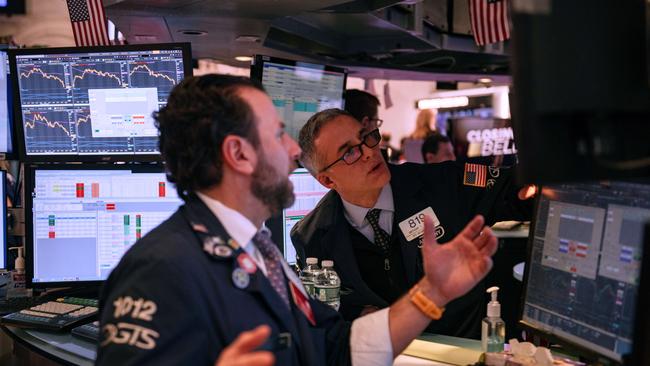After the plague, cashflow starvation strikes economy

This epidemic represents simultaneous demand and supply shocks for global businesses that can’t be remedied by any financial mechanism. It means that as a market correction trigger it is unique.
The cancellation of Mobile World Congress 2020, for which 120,000 telco and technology people from 200 countries had booked their tickets to arrive in Barcelona this week, probably did more to make the coronavirus look like a global pandemic and make the markets sit up and take notice than any WHO declaration could.
So on the day the congress was due to kick off this week, the process of adjusting financial market prices for a pandemic and recession began in earnest — downwards in the case of equities, upwards in the case of bonds and gold. By the end of the week it was looking more like a panic than an adjustment.
Will this be enough? No one knows, especially your correspondent, but it seems unlikely.
The only way this thing does not turn into a global recession is if the disease suddenly goes away of its own accord quite soon, and stops spreading around the world.
The longer the disruption to domestic demand and global supply chains goes on, the greater the damage to businesses, both short-term and long-lasting.
Australia is already in for a negative GDP in the March quarter and given the weak starting point due to be revealed on Wednesday, it won’t take much for that to extend into a second quarter, and recession.
At a macro level the problem is a fall in velocity of money, which has been declining globally for 20 years because of the rise in debt. Falling velocity has been neutralising the impact of the increasing supply of money produced by quantitative easing and low interest rates, with the result that both output and inflation have not responded.
But it’s at a micro level that the real dangers of the epidemic become apparent, and it’s not the disease itself that’s the problem.
This is the first social media pandemic in history, and the first in an era when public health and safety is more important to governments than the economy is.
And if you doubt that, look at Barcelona’s cancellation of MWC 2020 at a cost of up to €1bn ($1.68bn), not to mention China’s shredding of its five-year plan in a ferocious lockdown, including officials welding shut the doors of apartment buildings. The official responses to the virus all over the world involve a public display of putting health first, economy second.
The unique thing about this particular Black Swan is that unlike just about every other market correction in recent history, it is not caused by monetary policy or a banking crisis, leading to a credit squeeze leading to business retrenchments, but by a demand/supply shock direct to the businesses.
Firms that supply Chinese consumers, wherever they are — mainly within China, of course, but also in tourist destinations like Australia — have seen demand, and therefore their cashflows, collapse.
As other countries go into quarantine lockdown, domestic demand and cashflows in those places will topple like dominoes as well.
Businesses that still have demand can’t get supply. Mobile phones are drying up, even wedding dresses. Over the past two decades, the world has created a global just-in-time supply chain, with China at its centre: if the centre cannot hold and China shuts down, businesses everywhere are forced to close quickly because they can’t get stock.
Soon that will apply to goods from Korea as well, and then Italy, and then …
The result is that a cashflow famine is spreading from China. The immediate victims are small businesses that operate hand to mouth, but it won’t take long for large corporations to start running out of working capital as well.
Chinese businesses already suffer a cash drain in the first quarter of every year because of the Lunar New Year holiday: only 22 per cent of annual sales occur in the quarter but workers get paid more because they traditionally get annual bonuses before going on holidays. Tsinghua and Peking Universities did a survey this week of 995 small and medium-sized firms across China, asking them how long they can last without cash flow: 34 per cent said less than a month; 85 per cent said less than three months. No doubt the Communist Party government and the People’s Bank of China would step in to prevent a wave of mass bankruptcies if it came to that, but clearly China’s businesses are already under a lot of pressure.
Similarly the Federal Reserve and other central banks would ease monetary policy significantly if mass quarantines caused economic dislocation around the world, which is the scenario that markets had been pricing in before this week — a deflationary shock followed by monetary easing. But it’s also possible that central banks judge that monetary policy will do little to defend the economy against an exogenous shock like a pandemic — not that they have any experience of such a thing — and decide instead to sit on their hands, in which case this week’s correction would be just the beginning.
The only really positive scenario for markets is if it all turns out to be an overreaction spurred by social media and panicking governments, and that COVID-19 turns out to be just another flu with a slightly higher mortality rate.
We can only hope, but it doesn’t look like that at the moment.
Alan Kohler is the editor in chief of eurekareport.com.au



Whether or not the pandemic turns into a recession, it is already spreading cashflow starvation, if anything faster than the disease itself.